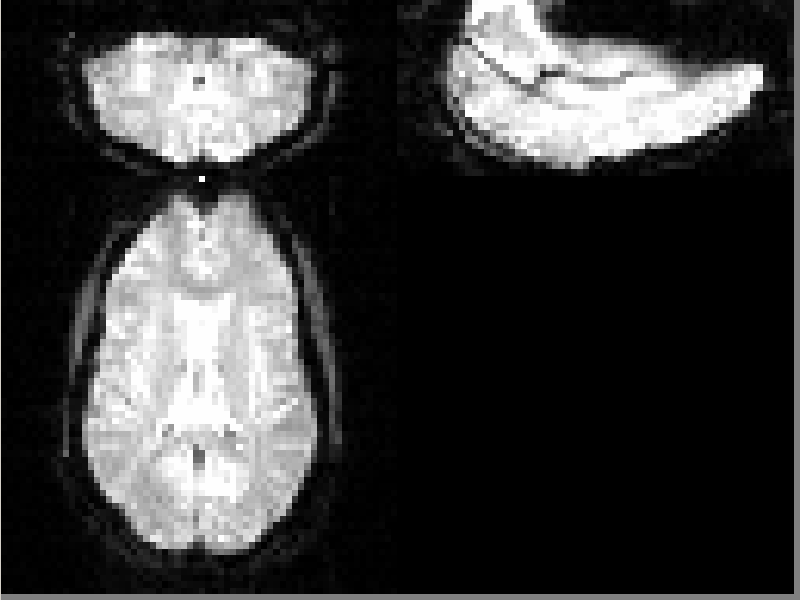Inter-slice Motion Correction for fMRI
From NAMIC Wiki
Home < Inter-slice Motion Correction for fMRI
Contents
Objective
* To perform inter-slice motion correction in fMR images using affine and non-rigid registration methods.
Progress
* Implemented and tested b-Spline/affine registration with Mattes-MI and KL metrics. * Coding completed. However, results are far from satisfactory. * Progress (maybe) stymied by "poor" resolution of data. * Progress (maybe) stymied by "not-so-viable" metrics (MI, etc.).
Results
Affine
- affine motion with all metrics degrades the inter-slice registration.
Non-Rigid
- B-spline deformation with KL metric produces very minimal change (in a least squares sense), while MI produces more changes but doesn't look correct.
Images
 Volume rendering of original volume
Volume rendering of original volume
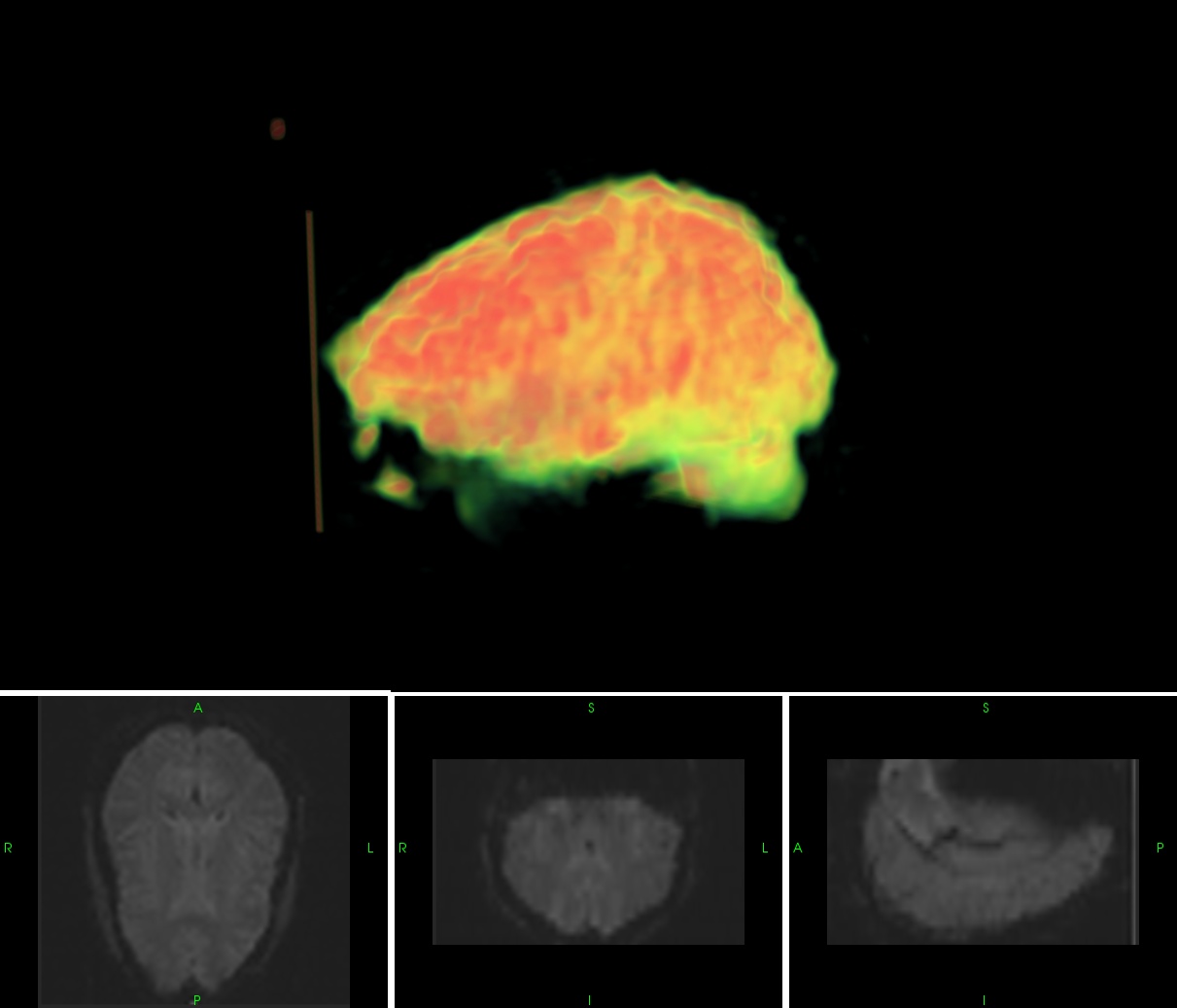 Volume rendering of up-sampled volume (0.5x0.5mm in axial plane)
Volume rendering of up-sampled volume (0.5x0.5mm in axial plane)
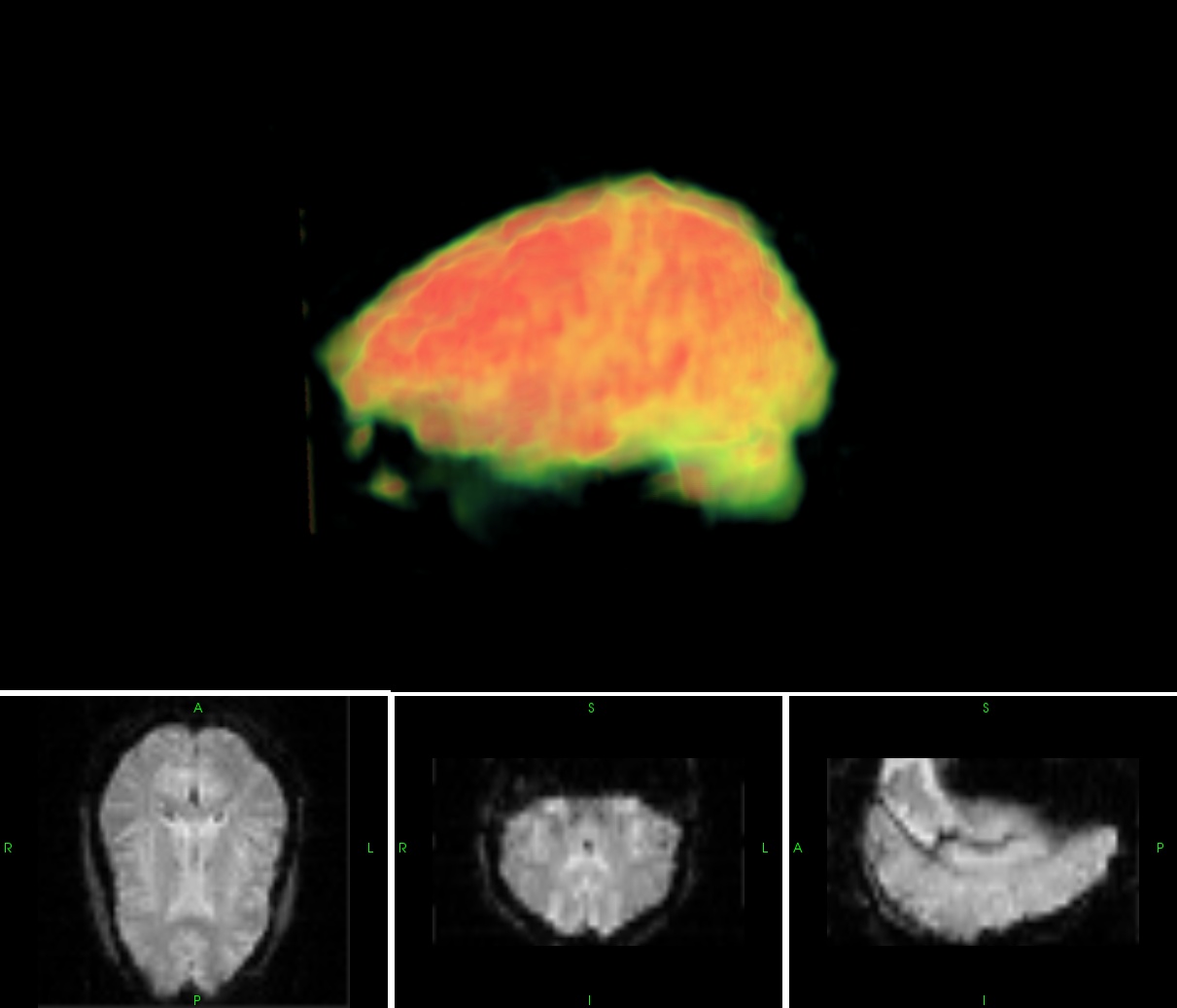 Volume rendering of co-registered volume
Volume rendering of co-registered volume
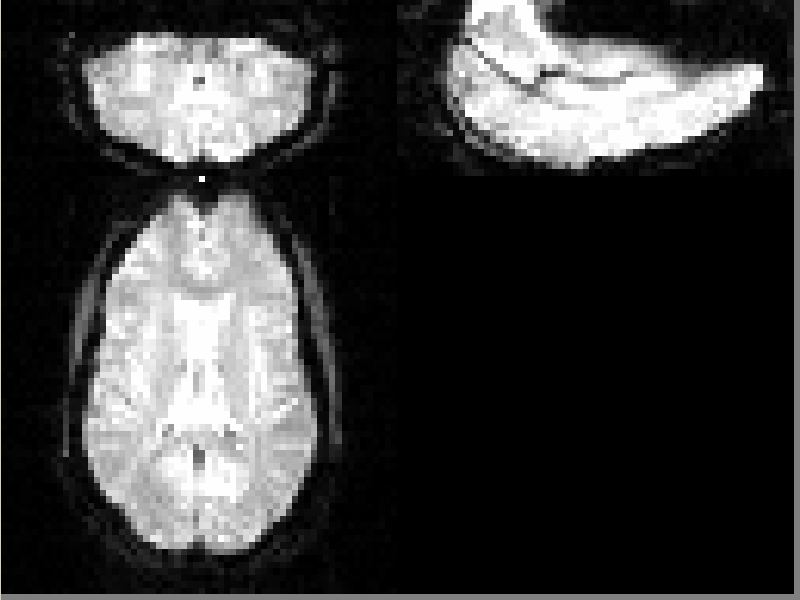 Affine motion with mean square error metric
Affine motion with mean square error metric
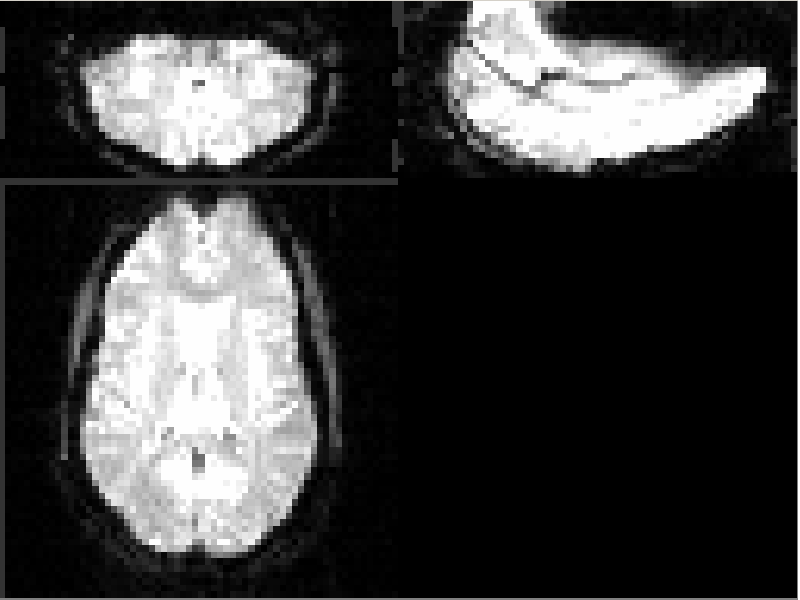 Affine motion with Mattes MI error metric
Affine motion with Mattes MI error metric
Issues
- As can be seen any registration result looks more jagged (along the sagittal and coronal sections).
- Low sampling rate and image noise - all the metrics are extremely non-smooth as a result.
- Even the slightest change in initialization results in a large deviation in the registration result.
Open questions
* Intensity normalization / histogram equalization - would these have any impact on inter-slice registration? Would they affect the computation of the joint-entropies for MI/KL metrics. * Should there be some regularization factor on the registration to limit the motion ?
To Do
* Right now, registration is done on a slice by slice basis. However, due to the low resolution of fMRI and the absence of gradients result in low registration accuracy. We are investigating using alternative image-to-image metrics like the KL divergence. We are also looking at simultaneously registering multiple slices.
Key Investigators
* Firdaus Janoos, Raghu Machiraju, Steve Pieper, Wendy Plesniak.
